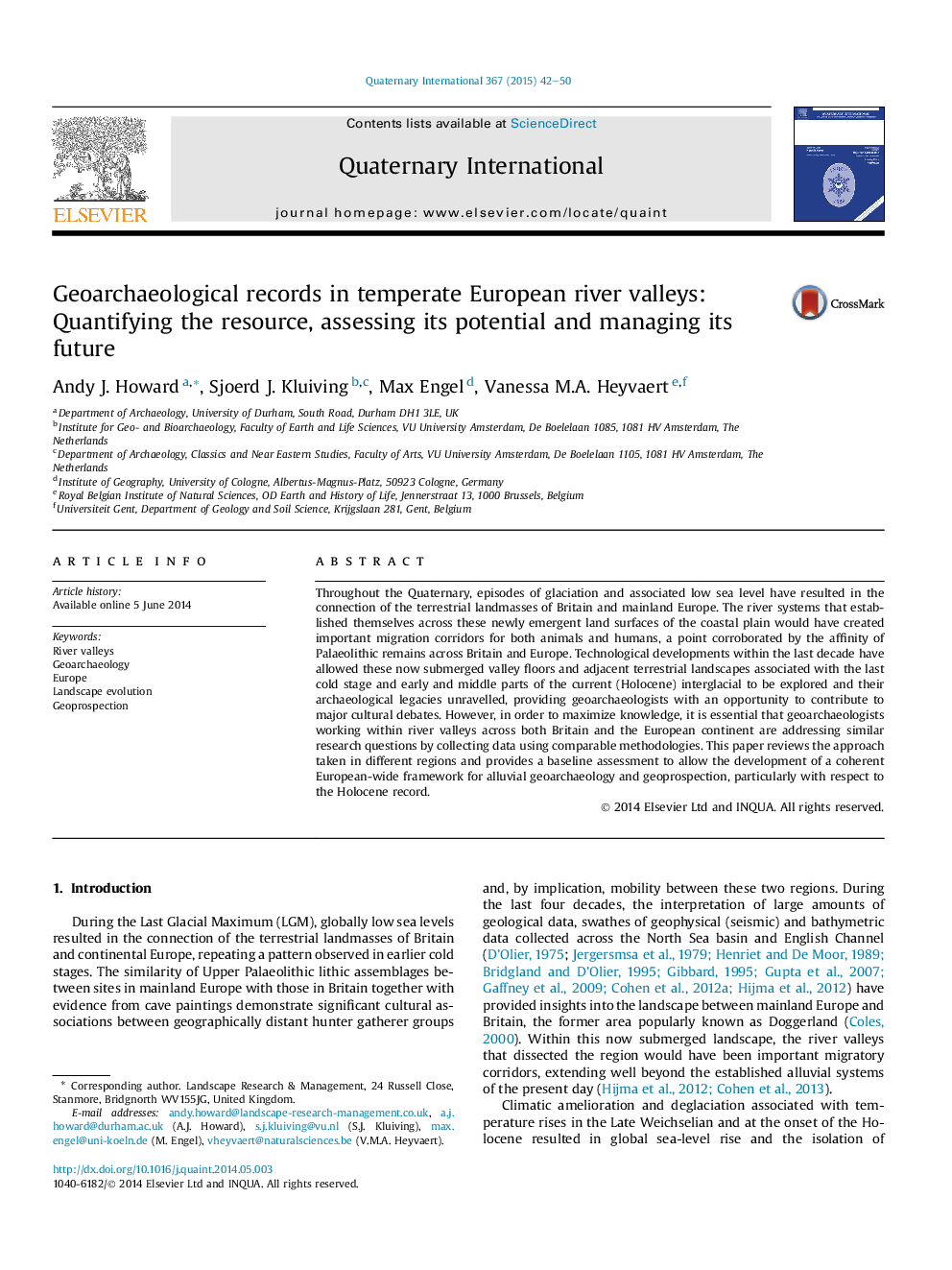| Article ID | Journal | Published Year | Pages | File Type |
|---|---|---|---|---|
| 1040855 | Quaternary International | 2015 | 9 Pages |
Throughout the Quaternary, episodes of glaciation and associated low sea level have resulted in the connection of the terrestrial landmasses of Britain and mainland Europe. The river systems that established themselves across these newly emergent land surfaces of the coastal plain would have created important migration corridors for both animals and humans, a point corroborated by the affinity of Palaeolithic remains across Britain and Europe. Technological developments within the last decade have allowed these now submerged valley floors and adjacent terrestrial landscapes associated with the last cold stage and early and middle parts of the current (Holocene) interglacial to be explored and their archaeological legacies unravelled, providing geoarchaeologists with an opportunity to contribute to major cultural debates. However, in order to maximize knowledge, it is essential that geoarchaeologists working within river valleys across both Britain and the European continent are addressing similar research questions by collecting data using comparable methodologies. This paper reviews the approach taken in different regions and provides a baseline assessment to allow the development of a coherent European-wide framework for alluvial geoarchaeology and geoprospection, particularly with respect to the Holocene record.
